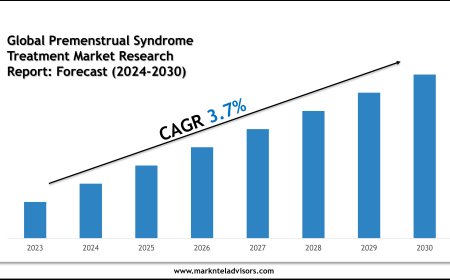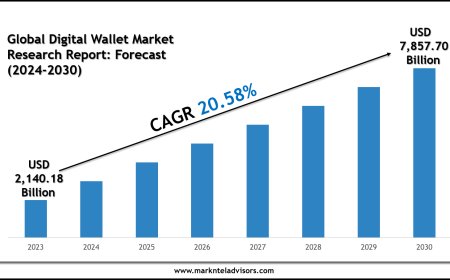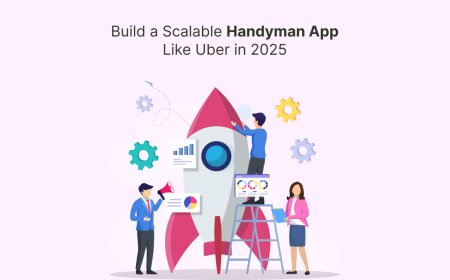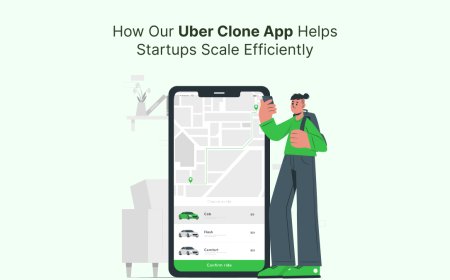Next-Gen Lending Platforms: Streamline Loan Origination with Smart Automation
Custom fintech software development

In todays fast-evolving financial landscape, speed, personalization, and security are not just advantagesthey're expectations. Traditional loan origination processes, with their lengthy paperwork, manual underwriting, and risk-prone evaluation, are rapidly becoming obsolete. Enter next-generation lending platformsdigitally advanced solutions designed to automate the loan origination journey end-to-end.
From loan request to disbursement, smart automation is transforming how lenders operate, enabling them to approve more loans, faster and with greater accuracy. These platforms not only cut down on human error and operational costs, but also enhance borrower experience with instant decisions, mobile accessibility, and transparent communication.
In this article, well explore what makes these modern lending platforms game-changers, how they work, their benefits, development lifecycle, and real-world applications. Whether you're a bank, credit union, or fintech startup, understanding this evolution is key to remaining competitive and scalable.
What Is a Next-Gen Lending Platform?
A next-generation lending platform is a digital infrastructure that automates and streamlines the entire loan origination processfrom application and credit analysis to underwriting, approval, documentation, and disbursement. Unlike traditional loan systems that rely heavily on manual intervention, these platforms use a blend of cloud technology, artificial intelligence (AI), machine learning (ML), digital identity verification, and API integrations to deliver a fast, frictionless, and secure lending experience.
They can be deployed as SaaS, on-premise, or hybrid systems, depending on the institutions needs. Whether used by retail banks for personal loans or by fintechs for peer-to-peer microloans, these platforms are modular, scalable, and highly customizable.
Key Features of Modern Lending Platforms
1. Digital Loan Application
Borrowers can apply for loans using web or mobile interfaces. Digital forms with smart fields auto-populate from uploaded documents or verified data sources, reducing application time and error.
2. Automated Credit Decisioning
The system uses credit bureau APIs, financial document scanning, and internal scoring models to evaluate creditworthiness instantly. AI helps identify fraud signals and unusual behavior patterns.
3. eKYC and Digital Verification
Next-gen systems integrate with national ID databases, biometrics, and OCR technologies to validate identity, income, and other essential borrower information in minutes.
4. Workflow Automation
Loan lifecycle stagesapplication review, underwriting, document processing, approval, and disbursalare automated through rules-based engines, reducing human intervention.
5. Integrated Risk Management
Real-time fraud detection, compliance checks (AML, KYC, GDPR), and credit risk modeling are built into the platform, helping mitigate lending risks from the start.
6. APIs and Third-Party Integrations
These platforms connect with CRMs, accounting tools, credit bureaus, bank systems, and even blockchain solutions, ensuring a smooth ecosystem across your fintech stack.
7. Customizable Lending Products
From payday loans and mortgages to BNPL and SME loans, these platforms allow users to build and deploy loan products tailored to different customer segments and regulatory frameworks.
Benefits of Automating Loan Origination
1. Speed & Efficiency
Smart automation slashes loan approval times from days to minutes. Faster decisions mean higher customer satisfaction and lower operational overhead.
2. Enhanced Customer Experience
Borrowers can complete the loan process from any device, get real-time updates, and access a dashboard showing loan status, payment schedules, and support.
3. Lower Risk Exposure
Automated risk models and compliance filters reduce bad loans and prevent fraud, while maintaining audit trails for regulatory reporting.
4. Cost Reduction
Lenders can cut processing costs by 3050% through automation and reduced manpower. This also frees up human teams to focus on complex or high-value cases.
5. Scalability
Modern platforms are cloud-native, enabling lenders to scale across geographies and serve thousands of customers simultaneously without performance issues.
How the Software Works
Next-gen lending platforms typically follow a modular architecture with interconnected services and data pipelines. Here's a simplified breakdown of how they function:
-
User Onboarding: The user signs up, uploads documents, or connects their bank for income verification. Biometric or OTP verification is performed for security.
-
Loan Origination: A loan request is submitted with automated eligibility checks using pre-set rules or AI models.
-
Data Fetching & Scoring: The platform pulls data from credit bureaus, financial APIs, ID systems, and employment verification databases. It then calculates a risk score.
-
Underwriting Decision: Based on scoring and credit models, the system recommends approval, rejection, or escalation for manual review.
-
Digital Contracting: E-signatures, automated agreement generation, and cloud document storage make contract completion fast and secure.
-
Disbursement & Repayment: The funds are transferred directly to the borrowers bank account. Repayments are scheduled via integrated payment gateways.
-
Monitoring & Reporting: The backend monitors loan performance, provides real-time dashboards, and generates reports for stakeholders and regulators.
Developing a Custom Lending Platform
The development of a smart, scalable lending solution involves several key steps. Heres how to build a platform that meets your business goals:
Step 1: Define Business Scope
Start by identifying your use case: personal loans, SME lending, P2P platforms, mortgage automation, etc. Determine the required features and geographic scope.
Step 2: Map Regulatory Requirements
Analyze local and international compliance frameworks such as:
-
AML/KYC
-
GDPR
-
Fair Credit Reporting Act (FCRA)
-
PCI-DSS for payment security
This will guide architecture and feature planning.
Step 3: Choose Tech Stack
Popular choices include:
-
Backend: Node.js, Python (Django), Java
-
Frontend: React, Angular, Flutter (for mobile)
-
Database: PostgreSQL, MongoDB
-
AI/ML: TensorFlow, Scikit-learn
-
Cloud: AWS, Azure, GCP
-
APIs: Plaid (financial), Experian (credit), Twilio (alerts)
Step 4: Build MVP
Develop a minimum viable product with core features like:
-
Loan application
-
Credit analysis
-
eKYC integration
-
Admin dashboard
-
Payment module
Test it with early users and collect feedback.
Step 5: Implement Security & Compliance
Ensure the platform is protected with:
-
Data encryption
-
Role-based access
-
Secure APIs
-
Audit logs
-
SOC2/HIPAA standards (if needed)
Step 6: Integrate Ecosystem Tools
Add features that enhance performance:
-
Chatbots for support
-
CRM integration for customer tracking
-
BI tools for analytics
-
Marketing automation tools
Step 7: Launch & Iterate
Deploy your platform in a controlled environment. Monitor usage, improve workflows, and release new features based on user behavior.
Real-World Use Cases
1. Upstart
This US-based fintech uses AI to assess loan risk beyond credit scores. By analyzing 1,000+ data points (education, employment, etc.), it achieves 27% higher approval rates with fewer defaults.
2. Kabbage (Acquired by American Express)
Kabbage automated the entire SME lending process, offering working capital loans with minimal documentation and instant decisionshelping 200,000+ small businesses in the US.
3. Zest AI
Zest AI builds explainable ML models for credit underwriting. Their lending platforms reduce bias and improve financial inclusivity, especially for underserved populations.
4. Creditas (Brazil)
Creditas offers loans backed by assets (cars, homes) and uses digital platforms to streamline the borrower journey. Their platform connects lenders, insurance, and appraisers in one ecosystem.
5. Tala (Africa, Asia)
Using mobile phone data and AI, Tala provides instant microloans to users without credit history. Their mobile platform analyzes call logs, app usage, and bill payment patterns to determine creditworthiness.
Conclusion
The lending industry is undergoing a digital revolution, and next-gen platforms are leading the charge. Automation, AI, real-time analytics, and seamless integrations now power what used to be a clunky, paper-heavy process. Today, lenders can offer faster approvals, smarter decisions, and personalized experiences that drive growth and customer loyalty.
However, building such a platform requires deep technical expertise, regulatory awareness, and a solid business strategy. Thats where partnering with the right development team becomes crucial.
If youre considering launching or upgrading your lending infrastructure, investing in Custom fintech software development will give you the agility, security, and performance you need to thrive in a competitive market.



































